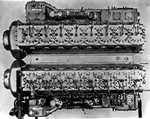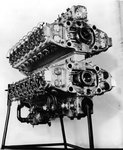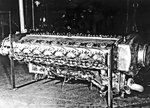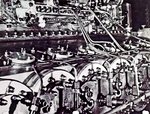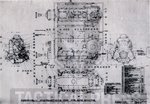You are wellcomed, without excuseI'm sorry if my post drags the discussion off topic,...
Thanks for remark. Close situation was either with DB 609 V16 because Germans needed to have longitudinal tube for gun barrel for firing thorough propeller shaft that is clearly visible on cross section xix. But never the less I consider such config. of V16 rather poor design in sense of balancing torsion charge....but the Chrysler IV-2220 (aka XI-2220) was indeed a 60 degree V-16. Chrysler was keeping the engine narrow at 33.5 inches but also needed enough room in the Vee (between the cylinder banks) for the propeller shaft, which extend from the gear reduction in the middle of the engine.
Thanks for info regarding the book. Unfortunately I have now possibility to buy it I am bot very fond of Chrysler airo engines but if it's possible I ask to share the info how was Chrysler IV ballanced, what was ignition order what was angle between cams of the camshaft. It would be nice to look at some drawings of it too.If you are interested in this engine, a new book dealing with the Chrysler IV-2220 was released either yesterday or today. The book does contain front and rear engine photos and a whole lot of information.
...
Last edited:


